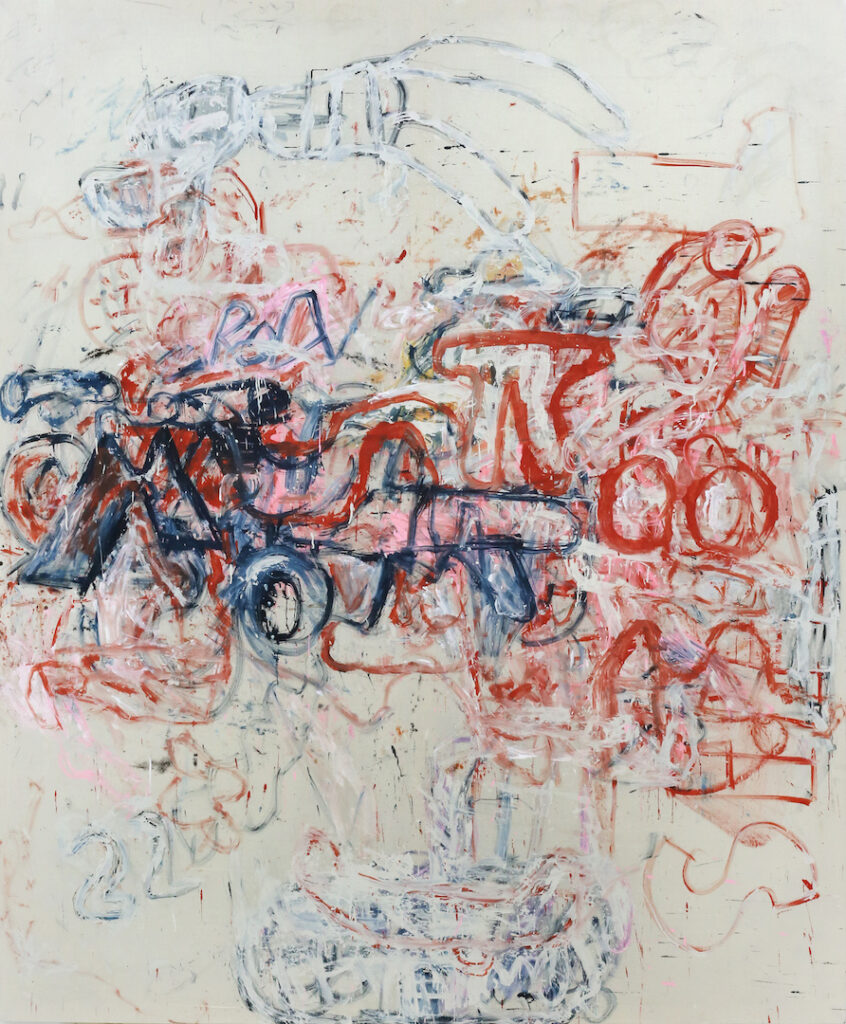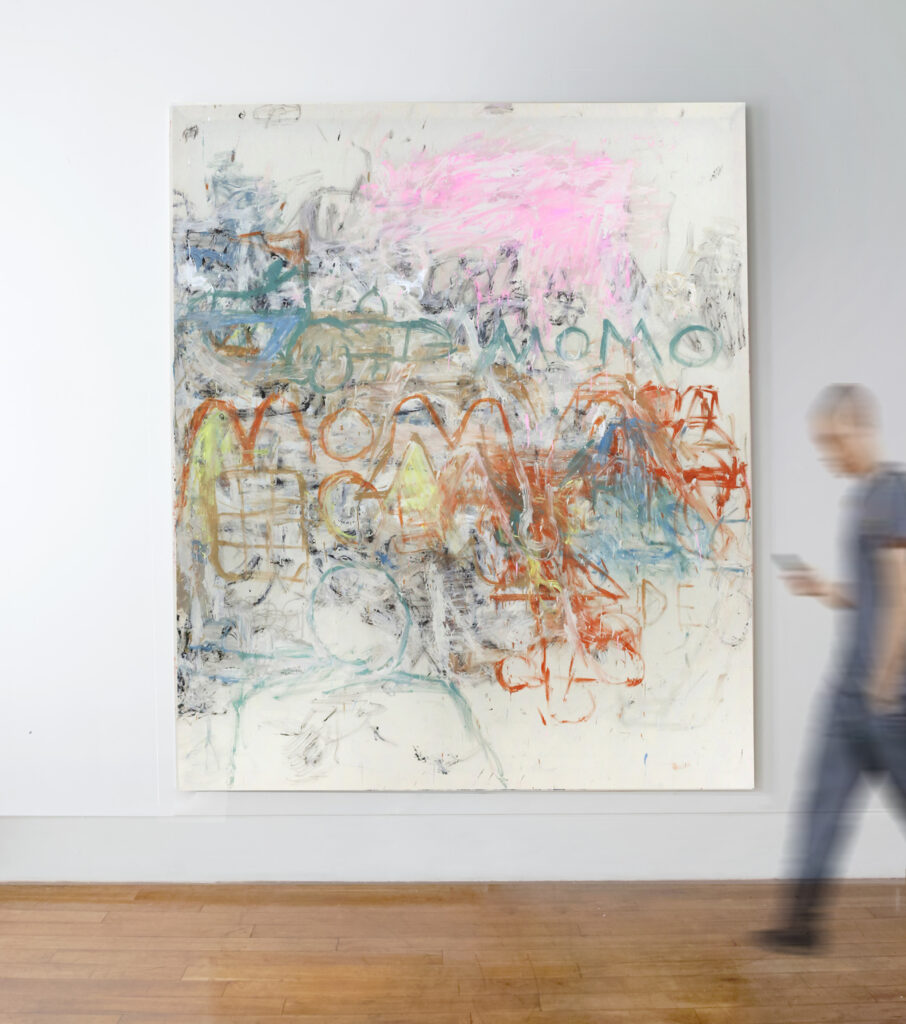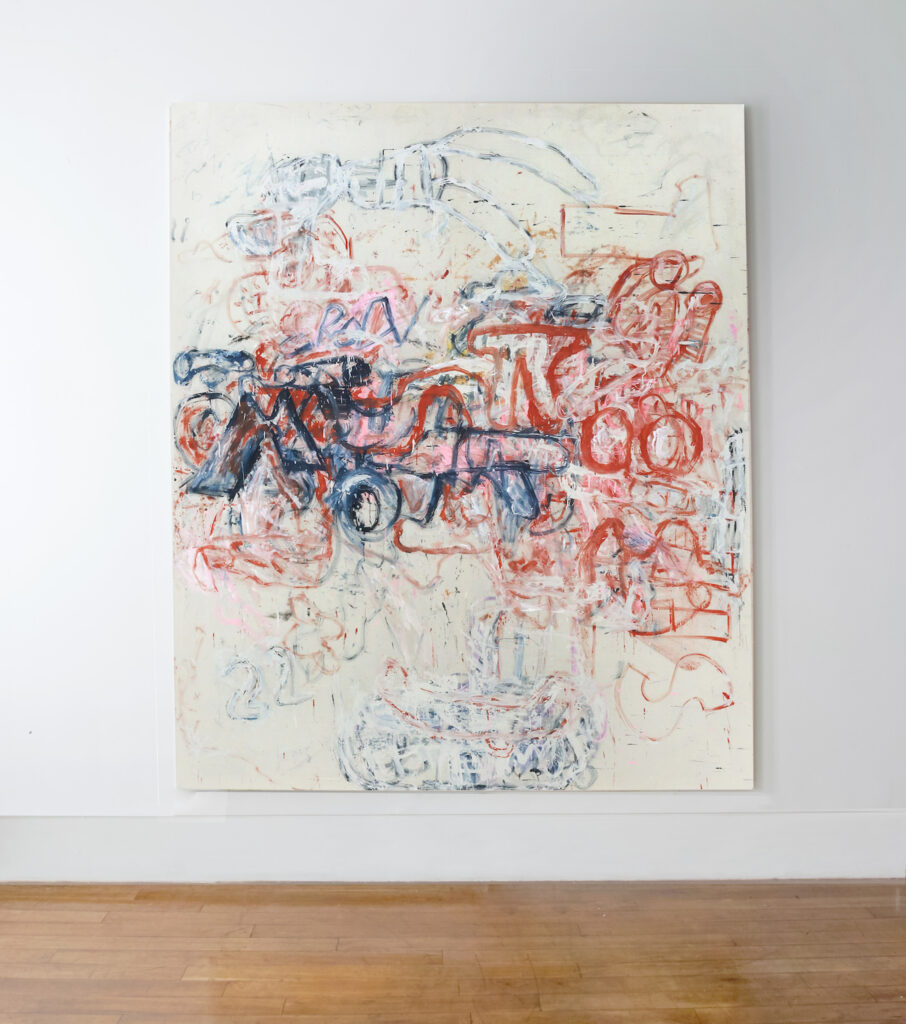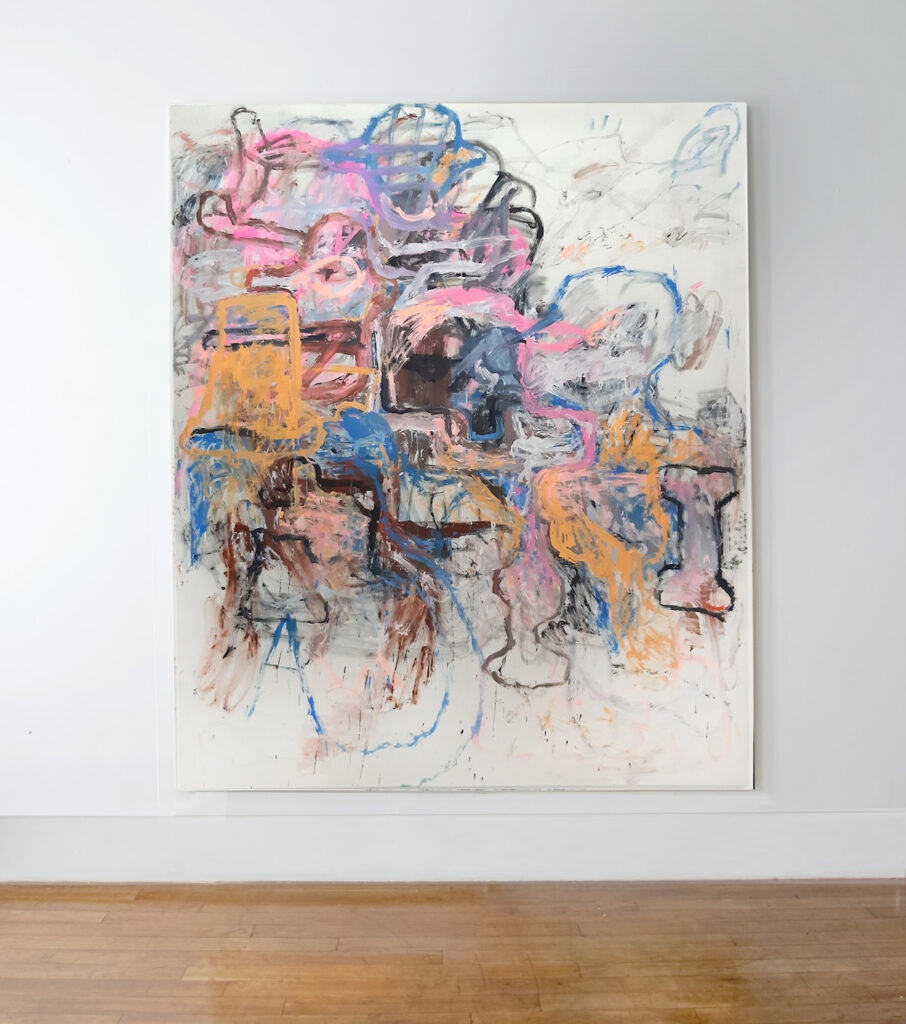HABIB FARAJABADI
CATCH 22
September 23 / November 12th 2021

Now an influential figure of new contemporary painting in Iran, Farajabadi was born in Itan soon after the revolution, and now lives in Tehran where he has always worked. For the last seventeen years he has been producing abstract paintings that have been exhibited in Europe, Australia and the United States despite sanctions that seek to mutter relations and cultural exchanges between Iran and the rest of the world.
Farajabadi is self-taught, his childhood was spent on railroads due to his father’s job (which may be an influence on his work), and came to painting looking at a very diverse field of visual references that include modern art books, architecture, Iranian traditional handicraft such as tile work and pottery, and ancient Iranian weaving practices, in particular Kilim and Gabbeh. His use of language in the compositions (segments of words seemingly referencing English) may best be described as F-ENGLISH, a mix of Farsi and English that could well reflect the ongoing conundrum of international relations that gave the show its title: “Catch 22.” Seemingly attached to the field of international abstraction, his work is imbued with personal motifs that defy categorization. Painting with handmade tools tipped with fabric (wool, cotton rags, rope…) Farajabadi layers components to give his paintings an almost archeological feel: here is the trace of a bone, a letter of the Roman or Persian alphabet, scribbles resembling cartoon characters or body parts. Based sequentially these layers form an eroded architecture that achieve a space that is quite unique to the artist and his practice while retaining a universal appeal: a clutter of shapes that could well belong to human anatomy, the structure of walls ancient and modern, and the condensed footprint of dense urban areas. A sense of crowding however is masterfully played by Farajabadi with his use of thin water based acrylics and thin fabrics allowing these works to breathe and exist in a balanced and conceptual form.









